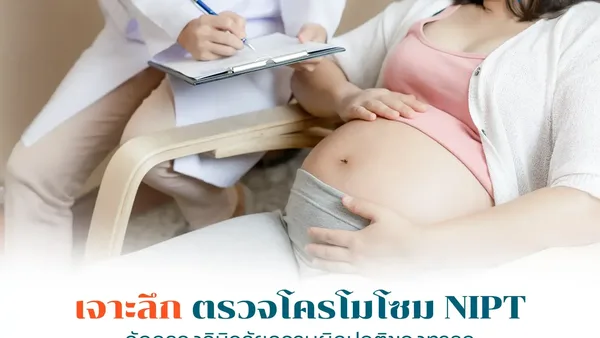Endometriosis is a condition that many women often do not realize they have because some of its symptoms are similar to those experienced during menstruation. Many may wonder what this disease is, whether it is dangerous, what causes endometriosis, what symptoms it presents, and what treatment methods are recommended if diagnosed.
Endometriosis
Endometriosis is a condition where endometrial cells grow outside the uterine cavity. The most common locations are the ovaries, fallopian tubes, the front, back, and sides of the abdominal lining.
Normally, the endometrial lining sheds during the menstrual cycle. Most patients seek medical attention due to progressively worsening abdominal pain during menstruation.
Causes of Endometriosis
Endometriosis can result from various factors, including:
- Retrograde menstruation: Menstrual blood containing endometrial cells flows backward through the fallopian tubes into the pelvic cavity instead of leaving the body.
- Surgical scars: After surgeries such as hysterectomy or cesarean section, endometrial cells may adhere to the surgical wounds.
- Cellular transport: Endometrial cells may be transported to other parts of the body through the blood or lymphatic systems.
However, the most common cause is retrograde menstruation, where menstrual blood flows back into the pelvic cavity through the fallopian tubes and implants on the uterine cavity or other organs. Common sites include the pelvic cavity, ovaries, fallopian tubes, pelvic walls, uterine surface, and cervix.
Warning Signs and Symptoms of Endometriosis
The symptoms that should prompt a visit to the doctor include:
- Painful menstruation (Dysmenorrhea): Lower abdominal or pelvic pain that may start before the period and last several days, sometimes throughout the menstrual cycle.
- Pain during sexual intercourse: Deep pain during or after sex is common in those with endometriosis.
- Pain during bowel movements or urination: Often occurs especially during menstruation.
- Abnormal vaginal bleeding: Heavy menstrual bleeding or prolonged periods.
- Infertility: Some women discover they have endometriosis when undergoing infertility evaluations.
- Other symptoms: Fatigue, diarrhea, constipation, bloating, or nausea, particularly during menstruation.
General Menstrual Pain vs. Menstrual Pain Caused by Endometriosis
- General menstrual pain: This can range from mild dull aching or cramping to severe pain in the lower abdomen. It may be accompanied by other symptoms such as lower back pain, diarrhea or constipation, bloating, dizziness, and headaches.
Menstrual pain due to endometriosis: The main symptom is lower abdominal or pelvic pain during menstruation, often with cramping. Many patients experience severe pain that tends to worsen with each menstrual cycle.
Characteristics of Endometriosis Lesions
1.Endometriosis Interna (Adenomyosis)
Endometriosis Interna refers to the condition where the endometrial tissue grows abnormally within the muscular wall of the uterus. It can appear in two forms:
- Localized: forming specific isolated nodules or lumps
- Diffuse (Overanalyzed): spreading diffusely throughout the uterine muscle tissue
This causes localized or overall uterine enlargement. Patients often experience painful menstruation (dysmenorrhea) and heavier menstrual bleeding than usual.
2. Endometriosis Externa
Endometriosis Externa refers to the abnormal growth of endometrial tissue outside the uterus. It commonly implants on the ovaries, fallopian tubes, uterine ligaments, and occasionally on distant sites such as the liver, diaphragm, lungs, or surgical scars in the abdominal cavity.
Risk Groups for Endometriosis
The risk groups for endometriosis include:
- Women who have never given birth
- Those who started menstruating earlier than usual
- Women who experience menopause or perimenopause later than normal
- Those with shorter menstrual cycles than average
- Women who have heavy and prolonged menstrual bleeding
- Individuals with a family history of endometriosis
- Those with conditions that cause abnormal menstrual flow
- Women with reproductive system abnormalities
Can Women with Endometriosis Get Pregnant?
Endometriosis can be a cause that reduces the chance of natural pregnancy and may lead women with this condition to experience infertility.
For women who have endometriosis and wish to conceive, doctors will recommend infertility treatments.
These treatments range from egg stimulation and intrauterine insemination (IUI) to in vitro fertilization (IVF) and intracytoplasmic sperm injection (ICSI).
Diagnosis of Endometriosis
When undergoing diagnosis for endometriosis, the general examination steps include:
- Medical History
The doctor will begin by asking if you have ever given birth, if you experience abdominal pain similar to menstrual cramps, and whether anyone in your family has had endometriosis. - Pelvic Examination
The doctor may perform a pelvic exam by inserting instruments to view inside the vagina or by manually feeling the lower abdomen and inside the vagina to detect abnormalities such as cysts in reproductive organs or adhesions behind the uterus. Small endometriosis lesions on the peritoneum may also be checked. - Ultrasound
Ultrasound is performed by placing a device on the abdomen or inserting a small probe into the vagina to get clearer internal images. However, ultrasound may not definitively diagnose endometriosis, especially small lesions on the peritoneum, but can detect ovarian endometriomas (chocolate cysts). - Magnetic Resonance Imaging (MRI)
MRI imaging helps doctors plan surgery more effectively by providing detailed information about the location and size of endometriosis lesions.
Treatment Guidelines for Endometriosis
1. Medication Treatment
Endometriosis can be treated with pain relievers or hormonal medications to suppress ovarian function and relieve pain. These include painkillers and nonsteroidal anti-inflammatory drugs (NSAIDs).
For women who wish to conceive, steroid-containing medications are not recommended because these drugs prevent pregnancy during treatment.
2. Hormonal Therapy
Hormonal therapy options include contraceptive pills, progestin hormones, androgen group hormones, and Gonadotropin-releasing hormone agonists (GnRHa). These help reduce heavy menstrual bleeding or menstrual pain. However, hormonal therapy is not recommended for women planning to have children as these drugs suppress ovarian function.
3. Surgical Treatment
There are two types of surgical treatments for endometriosis:
- Open abdominal surgery: This is the traditional surgical method but is less commonly used nowadays because it results in large wounds, more pain, and higher risk of post-operative complications.
- Laparoscopic surgery: This is the main surgical option for endometriosis. It offers high-resolution and magnified images to clearly identify lesions. It causes less pain, results in smaller wounds, reduces the chance of adhesions after surgery, and allows faster recovery compared to open abdominal surgery.
Frequently Asked Questions (FAQ)
Is Endometriosis Dangerous?
Endometriosis is not life-threatening. However, it can significantly affect women’s health due to chronic pelvic pain or menstrual irregularities. If left untreated, it may lead to more serious complications.
Summary
Endometriosis is a condition where cells from the lining of the uterus (endometrium) grow outside the uterus, such as on the ovaries or fallopian tubes. Although not fatal, endometriosis can impact daily life because of chronic pelvic pain. The causes include retrograde menstruation (menstrual blood flowing backward into the pelvic cavity), surgical scars, and the spreading of endometrial cells to other organs.
Symptoms include painful periods, pain during intercourse, abnormal vaginal bleeding, and infertility. Treatment options include medication, hormonal therapy, and surgery.
Therefore, women should not neglect their health and are advised to have an annual gynecological check-up, as abnormalities may be hidden without clear symptoms. For more information or questions, please contact Line: @beyondivf





